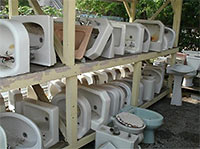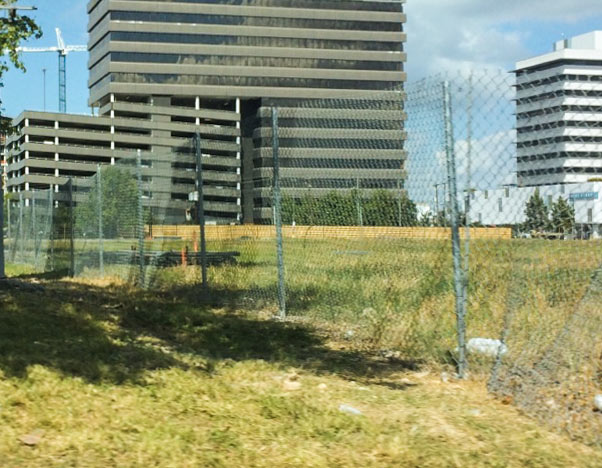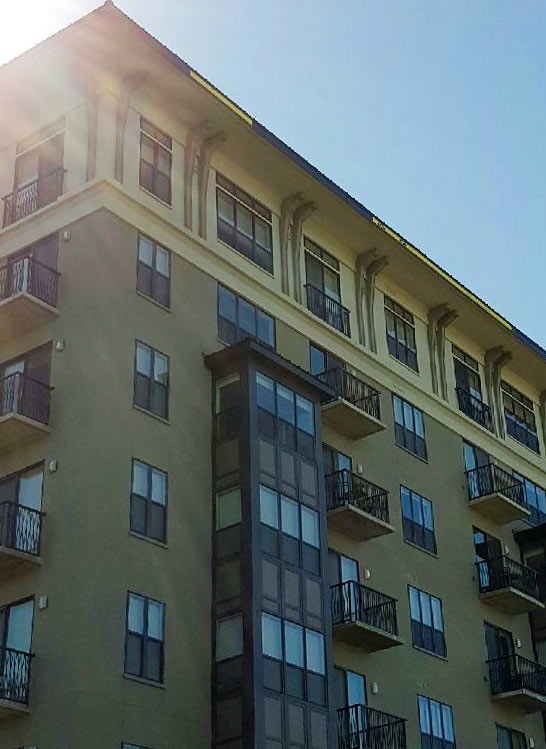FUNDRAISING TO REOPEN HISTORIC HOUSTON’S SALVAGE WAREHOUSE  Historic Houston is kicking off a fundraising campaign with an event 2 Sundays from now in a Woodland Heights home in the process of being restored. According to executive director Lynn Edmundson, the afternoon fundraiser will be “the first of many” targeting the $350K needed before the organization can lease a location for a new salvage warehouse. Historic Houston’s salvage warehouse on Clay St. was shut down last year. Edmundson reports the business model for the salvage program has changed in the meantime: Salvaging salable parts from older homes is now “a fee-based service that is paid by the person that donates the house to Historic Houston,” she tells Swamplot. [Historic Houston; previously on Swamplot] Photo: Historic Houston
Historic Houston is kicking off a fundraising campaign with an event 2 Sundays from now in a Woodland Heights home in the process of being restored. According to executive director Lynn Edmundson, the afternoon fundraiser will be “the first of many” targeting the $350K needed before the organization can lease a location for a new salvage warehouse. Historic Houston’s salvage warehouse on Clay St. was shut down last year. Edmundson reports the business model for the salvage program has changed in the meantime: Salvaging salable parts from older homes is now “a fee-based service that is paid by the person that donates the house to Historic Houston,” she tells Swamplot. [Historic Houston; previously on Swamplot] Photo: Historic Houston





So if I want to donate a house to Historic Houston, I have to pay them to take it apart, so that they can sell the salable items and make a profit?
Am I missing something? They charge to take free stuff, they sell at high prices (from what I heard) and they want someone to “donate” $350k so they can feel better about themselves? They shouldn’t be allowed to use the word “Business” in their business model.
For over 10 years Historic Houston provided that service free…and the Houston market and community benefitted from our doing that, which ended up being one of the factors that forced our Salvage Warehouse to close along with the downturn in the economy. Under the new business model, which is consistent with national models used by various non-profits involved in deconstruction and restores involved in reselling reclaimed materials, the donor of the house will now pay to have the materials reclaimed because they are the ones benefitting from the charitable contribution for the gift of the materials. As an example..a property owner could simply demolish a house…send everything to the landfill and they will have a cost associated with that for about $8,000.00 with no tax benefit. OR..the donor can donate the house to Historic Houston, pay for us to deconstruct/salvage the house, which may cost an additional 3,500-5,000.00, so a total cost of let’s say 13,000.00 to demolish the house. In every instance I have ever dealt with, the charitable contribution for the gift of the materials FAR EXCEEDS the total cost of the demolition and salvage sometimes multiple times over. Of course there is always someone out there that thinks that throwing it away…sending more and more irreplaceable resources and reusable materials to the landfills…is OK. Its just not their problem. I believe its everyone’s problem..because throwing away our resources can’t continue and we will all eventually have to deal with it in one way or another. If doing deconstruction and reclaiming building materials was such a HUGE profit center and money making proposition….there would be all kinds of competition out there in this growing market…but in fact there’s not..because it’s really hard work getting the material out, and storing the material until someone (hopefully) buys it is really expensive and the profit margin is incredibly low…thrift store value. That is why Historic Houston, because it is a non-profit, does this work, to benefit the greater community..and there are those in Houston that have really supported our work and our mission to reclaim, reuse to reduce to make the Houston community a better place to live.
This is the same business model that Habitat for Humanity uses for its Restore salvage stores in Houston and across the country. The only difference is that Habitat prefers newer materials and does not look for historic architectural salvage. The tax benefit of the contribution offsets the extra cost of deconstruction v demolition/landfill.
I’d rather have “historic preservationists” who actually saved houses instead of just what’s in them.
I used to be a big supporter of historic preservation, and even spent some time in Historic Houston’s warehouse looking for items to restore my 105 year old bunglaow. But, after the strong arm tactics used by the mayor and so-called “historic preservationists” to force my neighbors and I into a poorly written and enforced historic district, I am not inclined to help Historic Houston or anyone else in their preservation efforts. This is what happens when you force rules and regulations onto people “for their own good”. They wind resenting you and everything you stand for.
The mayor and preservationists have set historic preservation back 50 years. All of the goodwill previously generated in historic preservation has been lost. When owners of 100 year old homes who previously enjoyed preservation now hate everything the movement stands for, you have probably not done the movement any good. Good luck finding your $350,000. You won’t get a dime of it from me.
Do not kid yourselves, there is no Financial benefit in donating the material. Even if you claim full 13k as deduction, at an effective rate of 15% you’re only saving $1,950. Landfill argument is also weak, 90% of bulding materials are biodegradable or non-polluting (wood, stone), and the bad stuff (shingles, plastic, etc) is not reclaimed anyway and gets thrown out.
I suppose there’s some vague altruistic reason for doing this but I’m not sold yet.
@Matt Mystery: Saving materials goes a long way to preserving existing bungalows. A lot of great bungalows have had doors, floors, and other architectural/design elements replaced with cheap crap. Reclaimed materials in the right hands can be a night and day difference between a good renovation/restoration and more of the same crappy work that so many hacks have done to historic houses.
@commonsense: You should be able to deduct the extra cost of deconstruction v. demolition (not a tax professional, but if you are getting your tax advice from the internet. . .). The materials should get way more than 13k if there is good stuff. Claw foot tubs, doors, flooring and other elements can be worth a lot of money. Tax savings should easily cover the additional cost of deconstruction.
Also, nothing really biodegrades in landfills. I have seen a study on landfills where they dug down through years of trash only to find things like bananas and vegatables preserved and looking no more broken down than the day they were dumped. Everything in a landfill basically gets preserved because it gets packed in and starved of oxygen and water needed to get the microbes munching on the biodegradable matter. The landfill issue is really about the limited space available for landfills, which is not as big an issue here as it is on the East Coast. The bigger conservation measure is that reusing materials saves lots of energy, which means less emmissions and conservation of forrests and natural resources.
“storing the material until someone (hopefully) buys it is really expensive and the profit margin is incredibly low…thrift store value.â€
I would think to be successful one would only salvage the materials that the consumer wanted.
I just remember all those sinks, windows, even tubs, that just sat there, and took up an incredible amount of rental space.
It’s a problem.
I love the idea of the HH salvage warehouse, and, I want to have every possible old thing saved for me in case I may desire it in the future. (Also in case I just want to look at it and reminisce.)
Of course, Demo’ers will donate every possible old thing they’re trashing if they can benefit from doing so. (So, I like this model in case I need the odd thing later on…)
But, where are the deep pockets that will insure that I can acquire a 1954 oyster shell-shaped pink lavatory to complete my reno? When One is in the minority One is up #&*%’# creek.